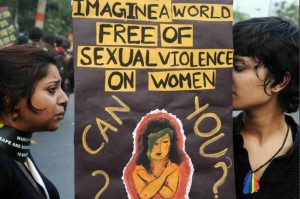
Last week marked the beginning of mine and Andre Nelson’s series on cultural identity, and Andre’s installment made the argument that cultural diversity may not necessarily be a positive thing, as he linked it to incidences of mass violence throughout history.
I find it easy to follow the connections Andre draws between clashes of culture and clashes of sword. He said himself in a previous editorial on the roots of contention, “Hatred stems from a perceived fear of others’ differences and the dehumanization of that people group.” We fear what we do not know, and most often what we do not know lies in the behaviors of those outside our culture. As Andre points out, fear causes hatred, and hatred causes violence. But, there are also very clear faults in Andre’s argument. His descriptions of glorified secular societies “where cultural heritage is but a vague memory” and faith is completely disconnected bring to mind nothing but Orwellian novels with tragic endings. In his article on hatred, Andre emphasized the need to “discover people as individuals… for then it becomes much more difficult to harbor hate.” But, where is there room for the individual in his idealistic, semi-communist utopia?
I feel that I am stating the obvious here. Those of you who read Andre’s article most likely drew the same conclusions I did, or at least felt some kind of discomfort at the thought of oppressing something as beautiful as cultural diversity, especially as it is particularly valued and celebrated here at Houghton College. So rather than continuing to pick apart Andre’s stance, my goal is to simply present an alternative view of and, perhaps, solution for, the value of culture and its effect on violence.
Cultural identity has long been associated with geographical location. Where we live affects how we live. So for the purposes of this editorial, let references to environment stand in for references to culture, as I’ll be discussing the connections between land (which shapes culture) and violence.
In the article “Reverence for the Sacred Land: A Response to Endemic Violence in Central America,” relief worker Tobias Roberts provides a glimpse of what human relations would look like if more heed was given to environment. He spent different parts of his life in two areas of South America: El Salvador and Guatemala. In El Salvador, Roberts remembers that walking down a street was a dangerous act. Violence was rampant, and seeing yet another body lying by the road was a common occurrence. Then Roberts goes on to talk of life in Guatemala. He recalls safety, freedom, and community, and he asserts that the defining characteristic was found in the people’s relationship to the land itself. A year or so before, a company had attempted to force, using violence, the construction of a hydroelectric project on the land of a Guatemalan village. The community formed a human wall and refused passage to the company. This “connectedness to their land and their determination to defend that land,” Roberts insists, is “the single most effective barrier to the propagation of violence.”
This is a powerful example of how environment can inspire peace within a single culture. But, as Andre points out, violence is between separate cultures. Roberts provides a solution for this, too. Back in El Salvador, where people refuse to leave their houses at night for fear of violence, Roberts’ mother-in-law organized a block party to celebrate the New Year. The lights, the music, and the smell of food eventually drew people out of their houses, and what resulted was a peaceful mixing of two ordinarily warring cultures—that of the gang members and drug dealers, and the families of the community. “It was a moment when the community became sacred again, when the fear associated with violence melted away and when the community collectively affirmed that this place is us,” describes Roberts.
What I find myself left with is the conviction that connection to the environment—and its by-product, culture—is far too beneficial to society to be so easily discredited and dismissed. Perhaps culture, or differences in culture, does have some part in the world’s history of violence. But, it is not the only cause, and certainly not a significant enough cause to warrant its complete elimination from society. And, if you willl allow me to indulge in some idealism, I would say that the propagation of communal reverence for land as a whole could create exactly the kind of large-scale peace that Andre envisions in his article.
Satish Kumar, editor of Resurgence magazine, discusses the meaning behind the designation of sacred geography such as the Ganges River and Mount Kailash in India. He makes the point that, although the people treat them as such, these are not specifically holy in and of themselves; the Ganges is not the only holy river, Kailash not the only holy mountain. Rather they are representations, local reminders of the belief by the Hindu people that all water is sacred, that all mountains are sacred, that the face of the earth in its entirety is to be treated with care. I value my culture and where I come from, and in doing so I recognize that all cultures, in their importance to other people, are valuable. Environment fosters community, and community encourages the absence of violence and the mutual respect and understanding that culture, and consequently people, is to be treated with care.


